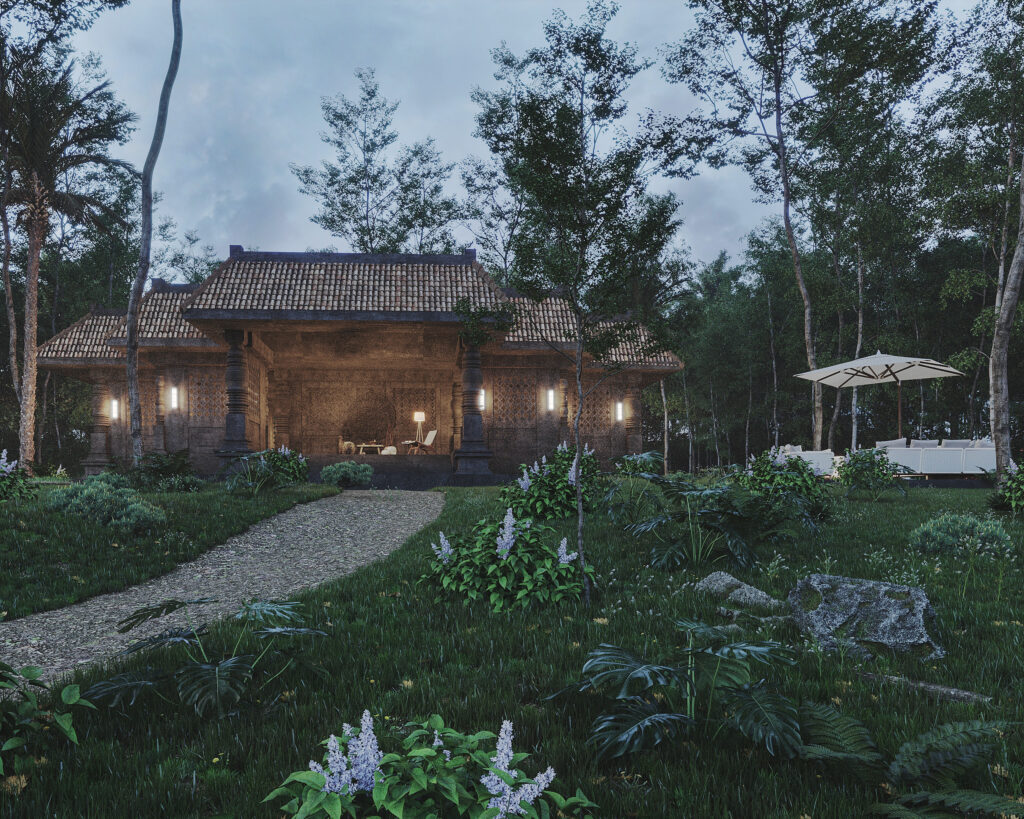Deep within the heart of the Western Ghats, where the lush foliage conceals hidden treasures, a young boy named Sala led a typical life in his village. However, the tranquility of his existence was abruptly shattered when a formidable tiger, like a sudden bolt of lightning, descended upon their sanctuary. Driven by an indomitable will to safeguard the lives of his fellow villagers, Sala bravely confronted the savage predator, summoning every ounce of strength within him. With unwavering determination, he defeated the mighty beast, emerging as a hero who had saved the lives of his gurukula’s pupils. From that fateful day forward, Sala’s destiny was forever altered, transforming him from an ordinary farmer into the visionary progenitor of the illustrious Hoysala dynasty.
The Majestic Hoysalas:
The Hoysala kingdom of antiquity extended its dominion far beyond the confines of the modern Kannada kingdom, encompassing vast swathes of South India and subduing formidable adversaries such as the Cholas and the Chalukyas. At the zenith of their power, the Hoysalas wielded considerable influence in shaping the destinies of neighboring kingdoms through astute political maneuvers. The Hoysalas ruled strong for over 300 years, shifting capital to Dwara-Samudra of the present-day Halebeedu. The name “Halebeedu” is a poignant reminder of the once-glorious Dwara Samudra, which fell to the relentless assaults of the Khilji Dynasty, led by the formidable Malik Kafur. After three decades of unwavering resistance, the final Hoysala ruler, Veera Ballala III, met his end. While the Hoysala Empire, the last bastion of Hindu rule in the south, succumbed to history’s march, the Hoysala feudatories preserved the empire’s indomitable spirit, laying the foundation for a flourishing dynasty on the banks of the Tungabhadra—the Vijayanagara, also known as the Kannada Samrajya.
Art and Culture:
The intricacies of Hoysala literature remain largely shrouded in the mists of time, but one notable aspect is the use of Kannada as the language of administration. The Hoysala’s earned distinction for their remarkable religious tolerance, offering refuge to adherents of all faiths in their realm. This inclusive approach to governance left an enduring legacy of harmonious coexistence and cultural exchange that shaped the tapestry of South India’s rich heritage. The Hoysala era also saw the flourishing of intricate temple architecture, characterized by its exquisite craftsmanship and intricate detailing, which still stands as a testament to their artistic prowess and dedication to their cultural heritage.
Architecture:
The Hoysala architectural legacy is a well-known and cherished part of Bengaluru’s cultural heritage. It’s highly likely that as a Bengaluru resident, you’ve had the opportunity to visit one of the splendid Hoysala temples at least once in your lifetime.
A typical Hoysala temple is characterized by five fundamental components:
- Garbha-griha (sanctum sanctorum)
- Antarala (vestibule)
- Mantapam (enclosed)
- Mantapam (open)
- Mukha Mantapam (porch)
- Garudagamba
The ceilings of these temples are adorned with intricate padma motifs, oral patterns, and various other decorative elements. On the exterior, the walls are lavishly adorned, seamlessly merging with the adornments on the outer walls of the garbha-griha, creating a harmonious and unobtrusive design. Additionally, the temples feature a unique roof structure resembling a protruding nose, known as “shukanasika.” The pillars within these temples are renowned for their lathe-turned craftsmanship, and the ceilings of the mandapam bays exhibit exquisite detailing. While spacious, the closed mandapam is relatively smaller in comparison to the open mandapam, both contributing to the overall grandeur of Hoysala temple architecture.
The Chennakesava Temple at Belur, the Hoysaleswara Temple at Halebidu, the Chennakesava Temple at Somanathapura, the temples at Arasikere, Amruthapura, Belavadi, Nuggehalli, Hosaholalu, Aralaguppe, Korvangla, Haranhalli, Mosale and Basaralu are some of the notable examples of Hoysala art. While the temples at Belur and Halebidu are the best known because of the beauty of their sculptures, the Hoysala art finds more complete expression in the smaller and lesser-known temples.
Our Project – THE SALA
We appreciate your interest in this introductory article about the Hoysala’s. Our enthusiasm for writing about the Hoysala’s is fueled by our ongoing project, “The Sala,” located near Beluru in Sakleshpura. The Sala encompasses a vast 55-acre property, boasting lush coffee, pepper, and timber plantations, as well as an upcoming resort. This resort is meticulously crafted with a Hoysala theme, featuring carefully designed architecture and beautifully landscaped gardens, creating an ideal retreat for those seeking to immerse themselves in the magnificence of the Hoysala Dynasty. With each passing day, we discover fresh wellsprings of inspiration as we work on this project.
We must acknowledge the glorious temples that the Hoysala’s have left behind as a testament to their remarkable legacy. Interestingly, while their temples stand as architectural marvels, there are no surviving grand Hoysala palaces. It’s perhaps a reflection of their humility that they focused on creating awe-inspiring temples rather than opulent palaces.
However, our villas at the Hoysala’s serve as a tribute to this illustrious dynasty, offering a glimpse into how they might have lived. This historic resort is more than just a place of relaxation and natural beauty; it represents a unique blend of the Hoysala spirit and modern luxury.
Moreover, beyond its historical significance, the resort presents exciting investment opportunities. The combination of our coffee plantation and this historic resort forms a profitable venture that not only guarantees lasting memories but also promises impressive returns on your investment. It’s an opportunity to be part of a cherished legacy while securing your financial future.

Stay tuned for an upcoming series of blog articles, where we’ll continue to explore the intriguing history and heritage of the Hoysalas.

